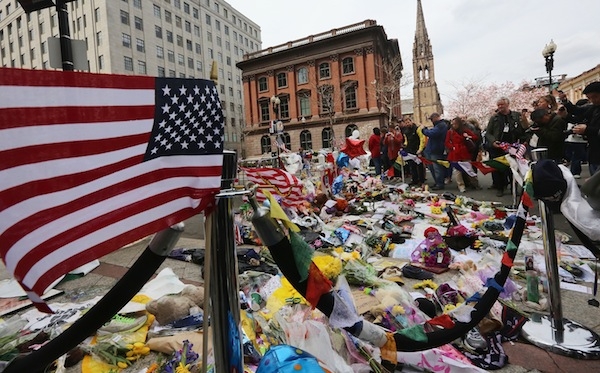With the manhunt for the alleged perpetrators of the Boston bombings – Tamerlan and Dzhokar Tsarnaev – now over, a complex and confusing picture is emerging of the two men involved. Here’s what we know so far.
1. The older brother, Tamerlan, expressed concerns about the American lifestyle. Featured in a photojournalism essay about his love of boxing, Tamerlan told the reporter he was very religious and disliked taking off his shirt at the gym in case women got the wrong idea. He also said he given up drinking because ‘God said no to alcohol’. Tamerlan also expressed concern at American values, arguing ‘there are no values anymore…[people] can’t control themselves.’ This led to his isolation from wider society, with him confirming ‘I don’t have a single American friend, I don’t understand them.’.
2. Tamerlan’s Youtube account reveals he had watched jihadist videos. These videos were not overtly linked to al-Qaeda (they were not, for example, speeches by Osama bin Laden) but nonetheless came from the jihadist milieu. In many cases they echoed the millenarian narrative of jihadist propaganda, accompanied by the motifs, logos, and iconography that is associated with it. Yet, Tamerlan’s online viewing habits are not as obviously jihadist as might be expected. Contrasting him with the failed ‘underpants bomber’ Umar Farouk Abdulmutallab, Tamerlan’s online persona is much more benign. Abdulmutallab left behind a clear trail of messages revealing a highly disturbed and radicalised personality. By contrast, Tamerlan was watching a lot of Russian pop songs – despite Salafi-jihadists declaring all forms of music forbidden. His brother, Dzhokar, reveals a similar history online. Six days before the bombings he posted a video online about the conflict in Syria, but had also posted clips from a Russian sketch show. Indeed, the overall pattern of their viewing habits online does not fit the pattern of a typical jihadist.
3. Neither of the men seemed particularly active in the local Muslim community. So far no details have emerged of any mosque where they are said to have regularly prayed. They also appear to lack connections to any group, nor have any of their friends spoken of them becoming radicalised over time by becoming more religious or by embracing more extreme political opinions. Again, this suggests there could have been a motive other than a jihadist one, but it remains unclear.
4. It is too soon to know if the men were part of a wider network or if they acted alone. What we do know is that at least one of the bombs closely matched a recipe released by al-Qaeda in the Arabian Peninsula. For the last two years AQAP has tried to equip sympathetic Muslims in the West with all the information they need to build crude homemade explosive devices, which saves them the need to visit training camps abroad. As a result it has published detailed bomb making instructions in the English language, in order to reach beyond its traditionally Arab audience. This would obviously suggest it was a jihadist attack.
5. Much is made of the men’s Chechen background. While they were born abroad, both had spent a decade in the United States, were educated there, and enjoyed the opportunities of a free society. This suggests the authorities will consider the case one of ‘homegrown’ terrorism rather than a foreign plot (as was the case with 9/11). Many Americans had assumed they were immune to this kind of attack, believing America could better integrate its immigrants than European countries. This will have an impact on future immigration debates in the United States.
6. This was probably the most crowd-sourced terrorist attack in history. Long before the FBI released official photographs of the suspects, internet users from online communities like 4Chan and Reddit had poured over open sources pictures to identify potential suspects. It was a clumsy and crude method – plenty of entirely innocent people were framed – but this is likely to be an unstoppable trend following all such attacks in the future. On Twitter, too, residents inside the Watertown cordon in Boston were warned not to tweet the location of tactical response units as they scoured the area looking for Dzhokar.
The Boston bomb plot itself was relatively straightforward and unsophisticated. Far more complex and complicated are the men behind it, their trajectories and motivations. That Dzhokar was taken alive means we can expect to learn a lot more about them in the coming days.






Comments